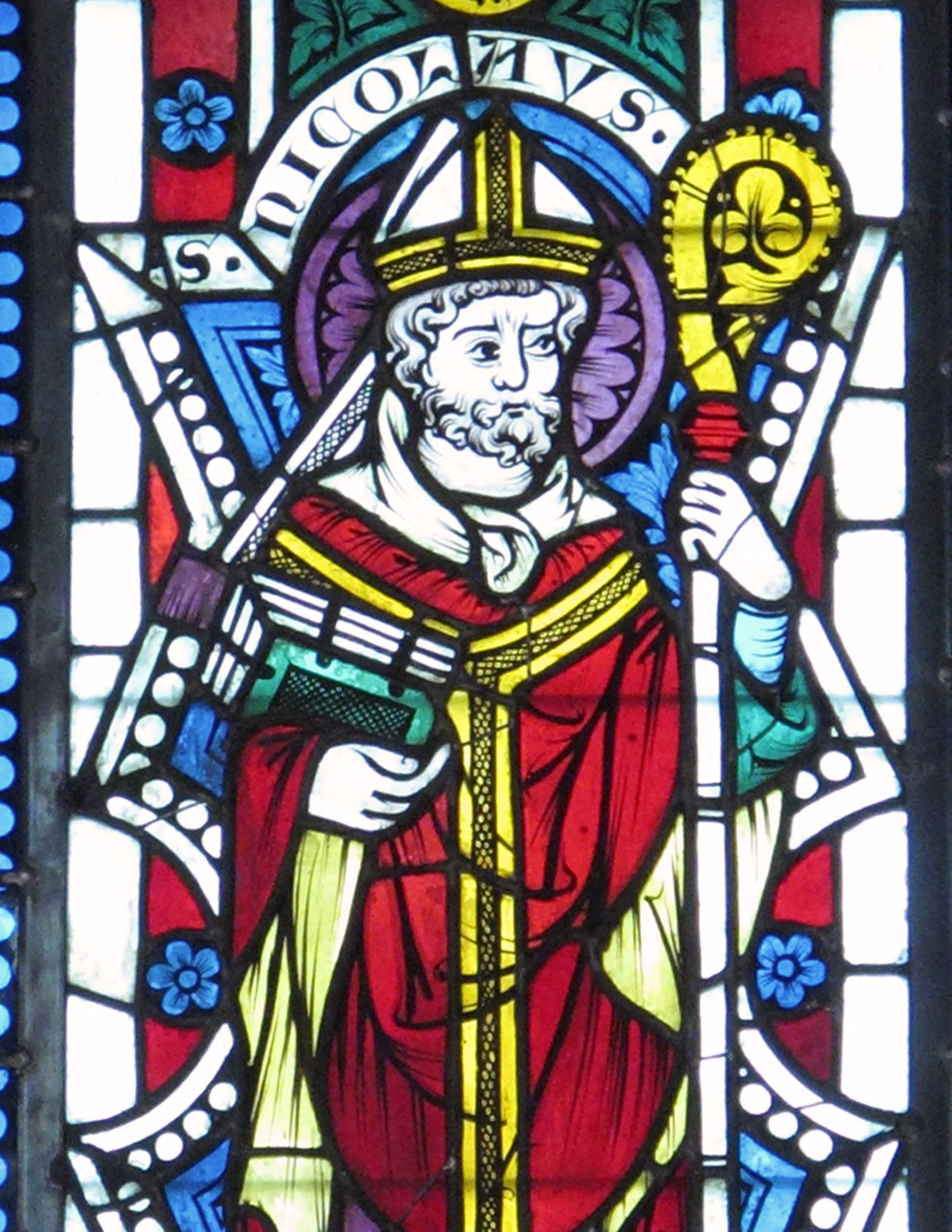
ABOUT THE ART
Stained glass window of Saint Nicholas. 1340–50. Made in Carinthia, Austria. Pot-metal glass, colorless glass, and vitreous paint. 35 x 13 in. (88.9 x 33 cm) with modern border: 35 7/8 × 19 × 5/8 in. (91.1 × 48.3 × 1.6 cm). The Cloisters Collection, 1965. New York City, New York. The Metropolitan Museum of Art.
St. Nicholas – December 6th
Saint Nicholas is one of the most revered saints in the Church, both in ancient and modern times. Today, St. Nicholas has been completely overshadowed by the Santa Claus story, but it is important to remember that there was a real man behind the legend.
St. Nicholas was a Greek man from Myra (now in Turkey). He is the patron saint of people without power and in need, including children, sailors, thieves, pawnbrokers, brewers, and prostitutes. The story goes that he rescued three girls from prostitution by paying their dowries by dropping coins in their windows while they were sleeping. It was not a far jump from helping widows to descending chimneys, and from gold coins to toys.
St. Nicholas was a generous man and a bishop in the Church who used its communal resources to help those in need. Some records say that he was present at the Council of Nicaea and was a defender of orthodoxy. Some say he had a little dust-up with the famous heretic Arius and was briefly imprisoned but let go because his heart was in the right place. He was known for working miracles and bringing joy wherever he went.
For his feast day, we are making St. Nicholas cookies. St. Nicholas cookies are thin, spiced cookies that originated in the Netherlands but are enjoyed throughout Belgium and Germany during the Christmas season. They are known as Speculaas in the Netherlands, Speculoos in Belgium, and Spekulatius in Germany.